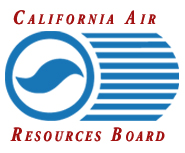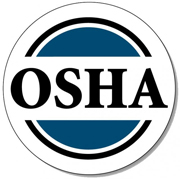Propane Exhaust Purifiers
Propane Exhaust Purifiers – Installation
1) The three-way catalytic converter is supplied in a kit form with the following items:
- Propane exhaust purifier (1 unit supplied)
- Oxygen sensor port with plug (1 port and plug supplied)
- Exhaust clamps (2 units supplied)
- Heat installation wrap (2.0” wide X 10 feet long roll – 1 roll supplied)
2) The propane engine should be in a very good state of condition with respect to tuning, repair and maintenance. All engine components and component tolerances should be well within the engine manufacturer specifications. The engine should not be consuming an unusual amount of lube oil. The ignition and carburetion systems should be operating properly and should be set to engine manufacturer specifications. A complete tune up prior to installation of the exhaust gas purifier is recommended to minimize harmful exhaust emissions and provides good purifier operation and life. Ensure that the engine spark plug(s) are new and that the air cleaner element(s) are new and/or clean.
3) Avoid installing the exhaust purifier in close proximity to electrical components, fuel lines, fuel tanks, hydraulic oil lines, hydraulic oil tanks, plastic components or any other combustible items. These purifiers are designed to slip over the outlet pipe(s) of the stock OEM muffler or are designed to be installed inline in the exhaust system tubing before the muffler. Use new Guillotine style exhaust clamps or accuseal exhaust clamps. If the propane exhaust purifier is equipped with support tabs, use the support tabs to firmly secure the purifier to the muffler, engine or equipment chassis, Fabricate struts from round 16 gauge steel tubing (1.5” diameter or greater), flatten the tube ends and drill bolt holes in the tube ends. Attach the struts from the support tabs; use the inlet/outlet muffler clamp nuts to secure mounting struts. Check the engine mounts to determine if the engine is rubber mounted or solid mounted to the equipment chassis. If the engine is rubber mounted secure the support struts only to the engine.
If the engine is solid mounted, the support struts can be mounted to the engine chassis. Use grade 5 bolts, nuts (mechanical locknuts) and lock washers to securely attach the struts to the purifier and to the muffler, engine or chassis. The purifier should be securely mounted. Avoid installing the purifier on badly rusted muffler, weak exhaust piped or muffler with weak tailpipes.
If you are installing the propane exhaust purifier before the muffler locate the propane exhaust purifier as close to the exhaust gas manifold outlet as possible. Cut out a 7.5” to 12.5” (depending on the exhaust purifier model as required) long section of the stock exhaust pipe. Install the propane exhaust purifier into the exhaust pipe. If you are welding the exhaust purifier to the exhaust pipe use a #309 filler road as a filler material. If using muffler clamps or accuseal clamps torque the nuts and bolts of the exhaust clamps to the correct specified torque. Ensure that there are no exhaust leaks.
Drill an 11/16” diameter hole into the exhaust pipe as close to the engine exhaust manifold as possible (within 12” is ideal). The 11/16” diameter hole must be drilled before the propane exhaust purifier. Fully weld the supplied steel oxygen sensor port (18mm X 1.5mm port) on top of the 11/16” diameter hole. The oxygen sensor port and plug are supplied with the propane exhaust purifier. Purchase a wire or 3 wire oxygen sensor from your local automotive parts store. Apply a high heat anti-seize compound to the threads of the oxygen sensor port. Start the engine and allow the engine to fully warm up for at least 15 minutes. Attach the voltage meter set to millivolts (mV). Measure the millivolt signal from the oxygen sensor while the engine operates at a steady idle speed and at a constant load. Use this table to interpret the oxygen sensor voltages:
|
Millivolt Voltage (mV) |
Interpretation |
|
Less than 250mV |
Too lean |
|
250mV to 410mV |
Lean |
|
410 to 580mV |
Ideal for purifier operation |
|
580 to 800mV |
Rich |
|
Over 800mV |
Too Rich |
Adjust the engine carburetion (richer or leaner as required). In most cases engine will have to have the carburetion slightly leaned to produce an oxygen sensor voltage of 410 mV to 580 mV. This range will produce the best carburetion setting for proper purifier operation and will result in the lowest carbon monoxide (CO), Hydrocarbons (HC) and Oxides of Nitrogen (NOx) pollutant levels.
Alternatively you can use an automotive gas analyzer (4 gas or 5 gas model) to measure the O, HC and NOx after the exhaust purifier. Adjust the engine carburetion (richer or leaner, usually slightly leaner then the stock jetting) to obtain the lowest CO, HC and NOX emissions. Take extra care when adjusting the idle fuel air mixture or high speed main jet size.
Engine failure can result if the engine carburetion setting is adjusted to a lean setting. If a sudden miss-fire occurs the air-fuel ratio is probably too lean or too rich. Use a cylinder head temperature gauge (for air cooled engines) to determine if the engine is running at the correct operating temperature. If the engine is running too hot, a richer air fuel ratio will be required to keep the engine cool.
5) When the carburetion is properly adjusted the propane exhaust purifier is ready for service. In order to ensure a long purifier life, avoid using the choke when the engine is warmed up and operating under load. In addition we recommend that the use of any engine shutdown mechanisms (for example a water tank level kill switch on a concrete saw) be disconnected. If the engine ignition system is shutdown while the engine is under load, raw fuel will connect on the purifier core. The raw fuel will burn rapidly and will melt the purifier core and automatically void the warranty. In addition keep the engine well tuned and equipped with new air cleaner element at all times.
6) The purifier has a very high surface temperature (1300°F+) and may produce a red/orange glow or small flames from the outlet cone. Insulate the purifier with the supplied heat insulation wrap after the purifier has been installed. Secure the heat insulation wrap after the purifier with hose clamps or wire. Cover the heat insulation wrap from oil or fuel contamination, if the purifier produces excessive flames from the tailpipe; double-check the engine carburetion to determine if the air fuel ratio is too rich. Leaning of the engine carburetion may be required.
If the engine carburetion is correct set the correct air/fuel ratio, consider adding a section of tailpipe to the purifier outlet. This section of tailpipe should reduce the flames at the purifier outlet cone.
7) During engine operation avoid all personal contact with the purifier. After engine shutdown avoid all personal contact and do not allow the purifier to come in contact with any combustible objects. When re-fueling, adding lubrication oil, adding coolant, adding hydraulic oil or during any periodic maintenance ensure that the engine is shutdown and that the surface temperatures of the purifier have cooled to ambient temperatures, Avoid re-fueling and avoid any contact of any form when the purifier is hot.
If you have any questions please call 1-800-551-5525 for additional information.












































